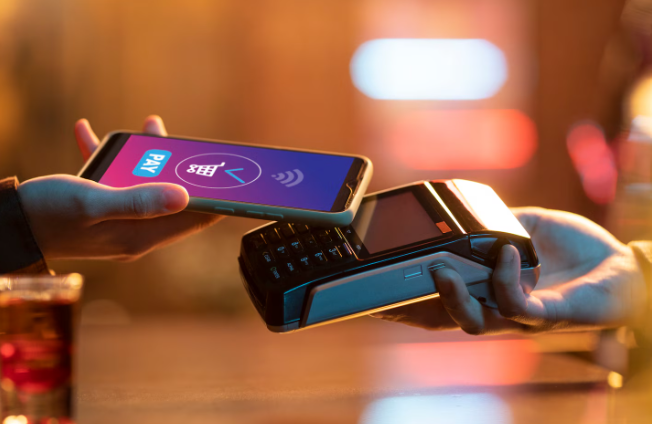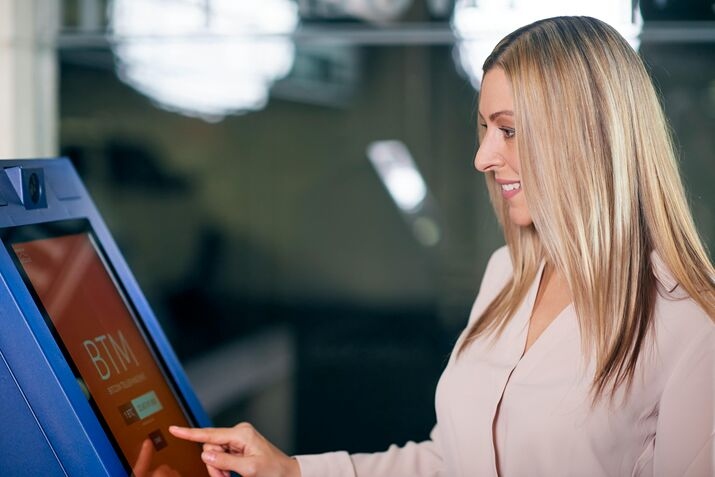In the last few years, the entire American way of spending, sending money, and saving has changed with the evolution of Digital Payments Fintech. From mobile wallets to instant bank transfers, fintech has reshaped the entire financial landscape of the U. S. With many more going cashless, Digital Payments Fintech is going to create new definitions for convenience, safety, and financial inclusion for millions.
In this post, we will discuss what Digital Payments Fintech means, why it is rising so fast in the U. S., and the trends shaping its future. We also cover how consumers and businesses can reap the benefits of this financial revolution.
What Is Digital Payments Fintech?
In simple terms, Digital Payments Fintech merges digital payments with financial technology into a single driving concept.
- Digital payments are payments done electronically, online, or in-store.
- Fintech is the technology-based innovation in financial services encompassing things such as mobility apps, digital banking, or online lending.
And when the two forces meet, we get Digital Payments Fintech, one of those names through which we modernize the speedy movement of money through technology. Included herein are PayPal, Cash App, Stripe, and Apple Pay, along with banking innovations from Zelle to FedNow.
These systems, at least in the U. S., have grown to become quite essential. The slow speed at which they work makes the transactions much slower, so they enhance security, which opens up new financial tools for those who were historically underserved.
Shift Toward Digital Payments in the USA
The digital payment industry in the U. S. has grown at a staggering rate in the last decade. Almost nine in ten Americans now use digital payments in some form, according to a 2024 McKinsey report.
Because they are faster, easier to a certain degree, and more reliable payment means-however conventional.
Several factors explain this massive shift:
- Mobile Convenience: Paying from smartphones is an easy and preferred way. Whatever the case, online shopping or splitting the bill at a restaurant is just a matter of a few taps.
- Payments Without Touch: Payment by means of money transfers and cards was being adopted so quickly by the population that its popularity has not waned post-pandemic.
- Growth in E-Commerce: With booming e-retail came the need for faster and safer methods of digital payment.
- Banking Innovation: Many U. S. banks are now partnering with fintechs to modernize payment systems through FedNow, real-time transfers, and others.
So, the Digital Payments Fintech has all but outgrown being mere payment methods and is now competing as the actual standard for finance in the United States.
Why Do Businesses Need Digital Payments Fintech?
For American businesses, Digital Payments Fintech is no longer optional; in fact, it has become absolutely imperative for success.
For American businesses, Digital Payments Fintech is no longer optional; in fact, it has become absolutely imperative for success.
- Speedy Cash Flow
Real-time payment networks provide for funds transfer within seconds. As a result, small businesses benefit from faster settlements, better cash flow, and smoother operations.
- Lower Processing Costs
Usually, FinTech systems charge less than credit card processors. This allows merchants to keep a larger chunk of their profit.
- Greater Customer Experience
Customers want a checkout experience that is frictionless. Providing the options of many digital payments will create satisfaction and build loyalty.
- Actionable Insights
Whatever happens in a digital transaction will provide data. Businesses analyze this data to understand buying behavior, customize offers, and forecast demand.
- Easier Global Expansion
Cross-border payments are much easier with the help of FinTech platforms. Small U.S.-based brands can, therefore, sell to customers internationally with relatively few hurdles.

Top Digital Payments FinTech Trends in 2025 and Beyond
Up until now, the Digital Payments FinTech segment has been fast-paced, with bigger innovations slated for 2025. The following trends are leading the charge into the U. S. market.
- Real-Time Payments and FedNow
One service, FedNow, is performing instant bank transfers 24/7, thereby changing payment speed in the United States and opening avenues for many fintech companies.
- The Growth of Mobile Wallets
Mobile wallets such as Apple Pay, Google Pay, and Venmo have become common terms. They do contactless payments, give you a digital receipt, and integrate with your loyalty program-HOWEVER, all in one app.
- Payments Everywhere
Embedded finance firms enable payments to be accepted directly on their platform. For example, Uber charges for your rides automatically, and Amazon lets you pay for your shopping with one click. This frictionless experience is the primary driver for the growth of fintech.
- GNINAUZ: Sales Boom
Buy Now, Pay Later provides Affirm and Afterpay with more options for consumers to pay and even more sales opportunities for retailers, as these payment methods tend to increase sales and cart value.
- Blockchain/Crypto Integration
Until now, a bit more attention has been given to the developments surrounding blockchain payments. Stablecoins and decentralized systems are under heavy scrutiny for performing faster and cheaper global transfers.
- AI-Powered Security
Artificial intelligence has, so far, been able to make digital payments safer. Fintech systems now detect fraud in real time and suspend transactions before users can be defrauded.
How Consumers Benefit from Digital Payments Fintech
Digital Payment Fintech brings convenience, control, and speed to the average American. Here’s how it matters to you:
- Simple and Fast
Transfer cash, pay your bills, or shop online in just a few seconds. No more waiting for the check to arrive in the mail or standing in long queues at your bank.
- Immediate Access to Money
Real-time payment options allow you to receive money on the spot, all the way from paychecks to sending money between two friends.
- Smart Money Management
Fintech apps let you keep tabs on your spending, plan budgets, and even save automatically. Everything is right there.
- Advanced Security
Many apps offer encryption, tokenization, and biometric security, hence providing a more secure environment than what is offered by traditional card systems.
- Greater Financial Inclusion
Fintech and mobile payment platforms are now allowing those Americans without bank access to engage in the workings of the economy.
Threats Facing Digital Payments Fintech
Despite its advantages, the Digital Payments Fintech sector faces a few challenges in the U.S.
- Cybersecurity Risks: As digital activity rises, so do hacking and fraud attempts.
- Regulatory Pressure: Federal and state agencies are reinforcing oversight procedures for consumer protection.
- Interoperability Issues: Some payment systems are still struggling to communicate with one another.
- Digital Divide: People, especially in rural areas, do not have access to a decent Internet connection or digital literacy.
Addressing these problems will be vital in instilling trust and ensuring the sustainability of the whole fintech ecosystem.
The Future of Digital Payments Fintech in the U.S.
Looking ahead, Digital Payment Fintech will continue to shape the flow of money and how we interact with financial systems. These are some of the things that will come to pass:
- Full Digital Integration: Payments will come embedded in literally everything — from smart devices, to voice assistants, all the way to cars.
- Easy Global Transactions: Cross-border payments will move faster and cheaper on real-time rails and blockchain.
- AI Personalization: AI will enable personalization of financial services with payment suggestions and spending insights.
Experts also predict that more than 80% of all US consumer transactions will occur digitally by 2030. In other words, fintech is not the future-it is the present.
Surviving the Digital Payments Fintech Revolution
In order to survive in this fast-paced world, consumers and businesses must unite. Here’s how:
- Give Way to Newest Payment Options: Give the option of being able to pay through digital wallets, mobile pay, and instant transfers.
- Security Comes First: Make sure that your platform leverages advanced encryption and multi-factor authentication.
- Stay Informed: Keep in touch with the changing times and landscapes of fintech tools, regulations, and technologies, such as FedNow and AI.
- Increase the Convenience: The easier the payment process, the more likely it is that customers will come back.
- Work Smarter with Data: Use it to analyze prevailing payment trends for enriching your marketing, operations, and sales strategies.
Conclusion
The Digital Payments Fintech revolution is reshaping American life and commerce. The potential offered is faster, safer, and more inclusive than ever before.
Real-time payment networks provide for funds transfer within seconds. As a result, small businesses benefit from faster settlements, better cash flow, and smoother operations.
As time goes by, Digital Payments Fintech will be the nucleus of any financial evolution — bringing people together, easing payments, and shaping the future of money in America.
